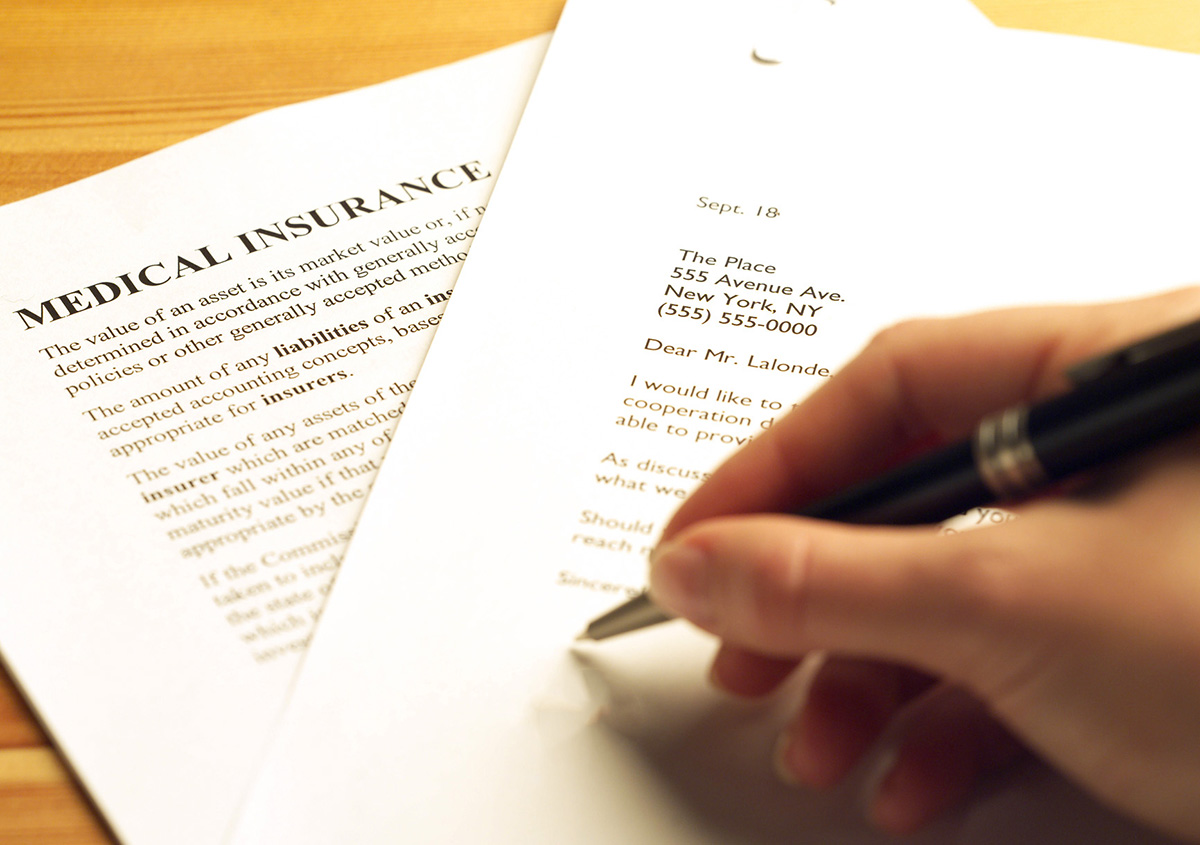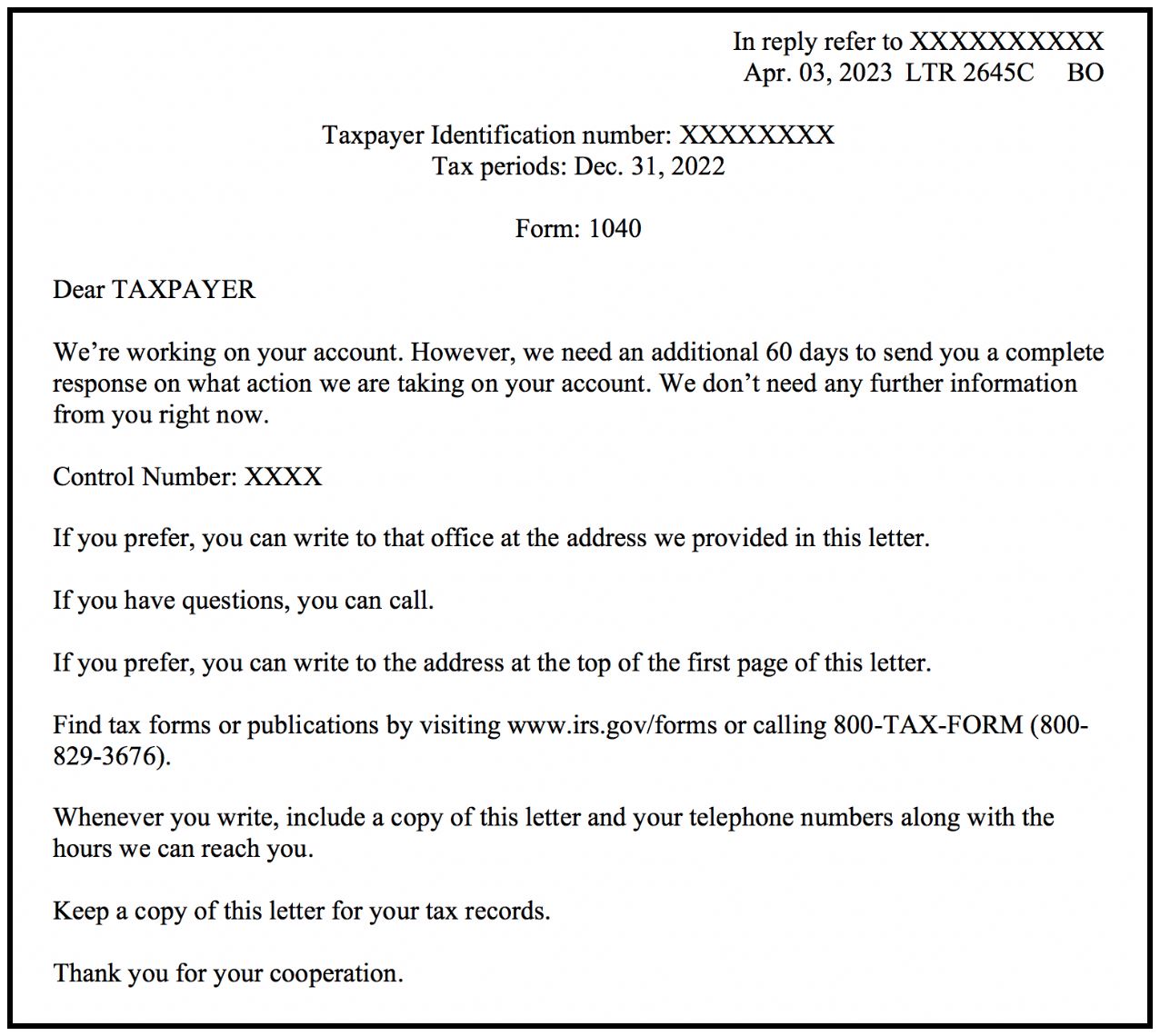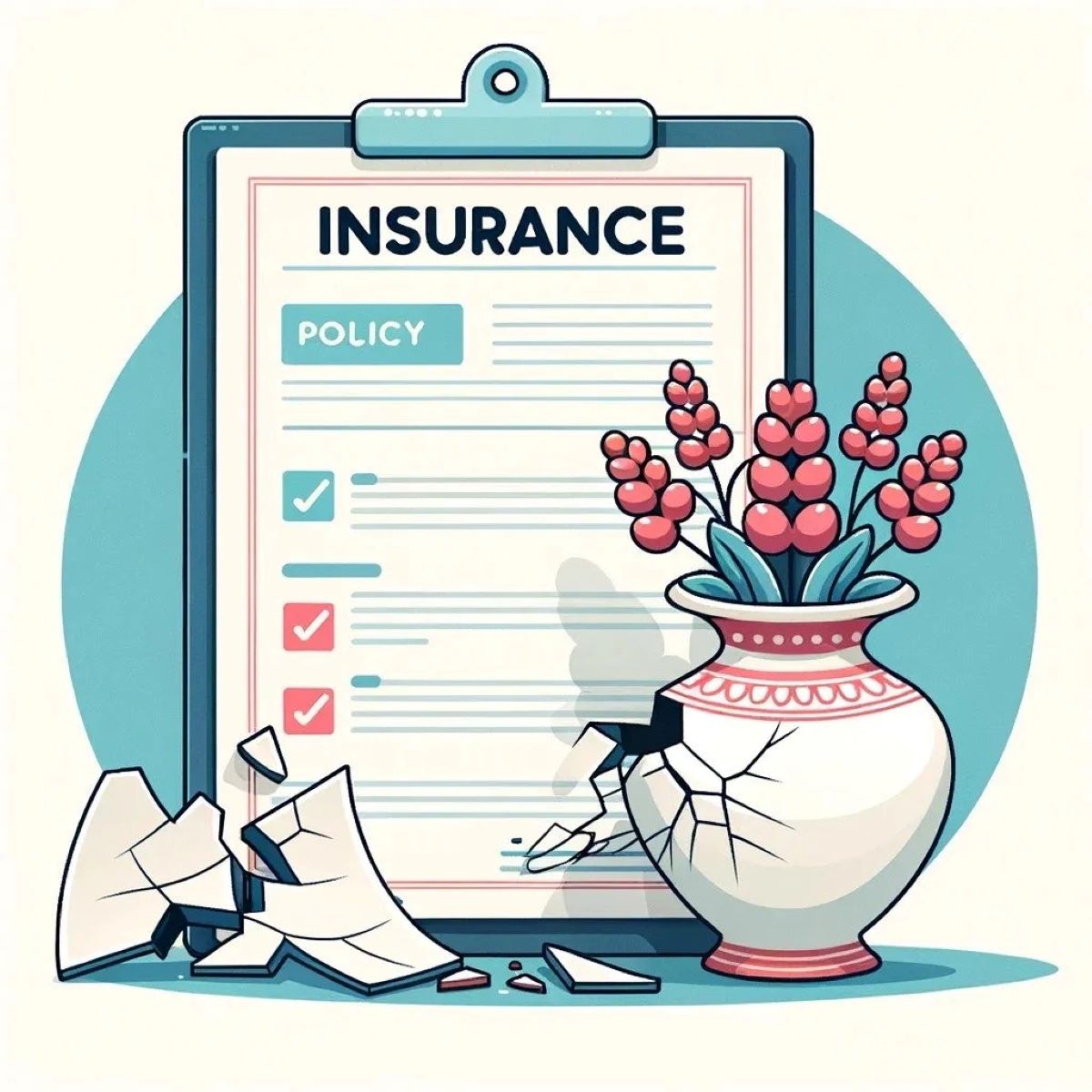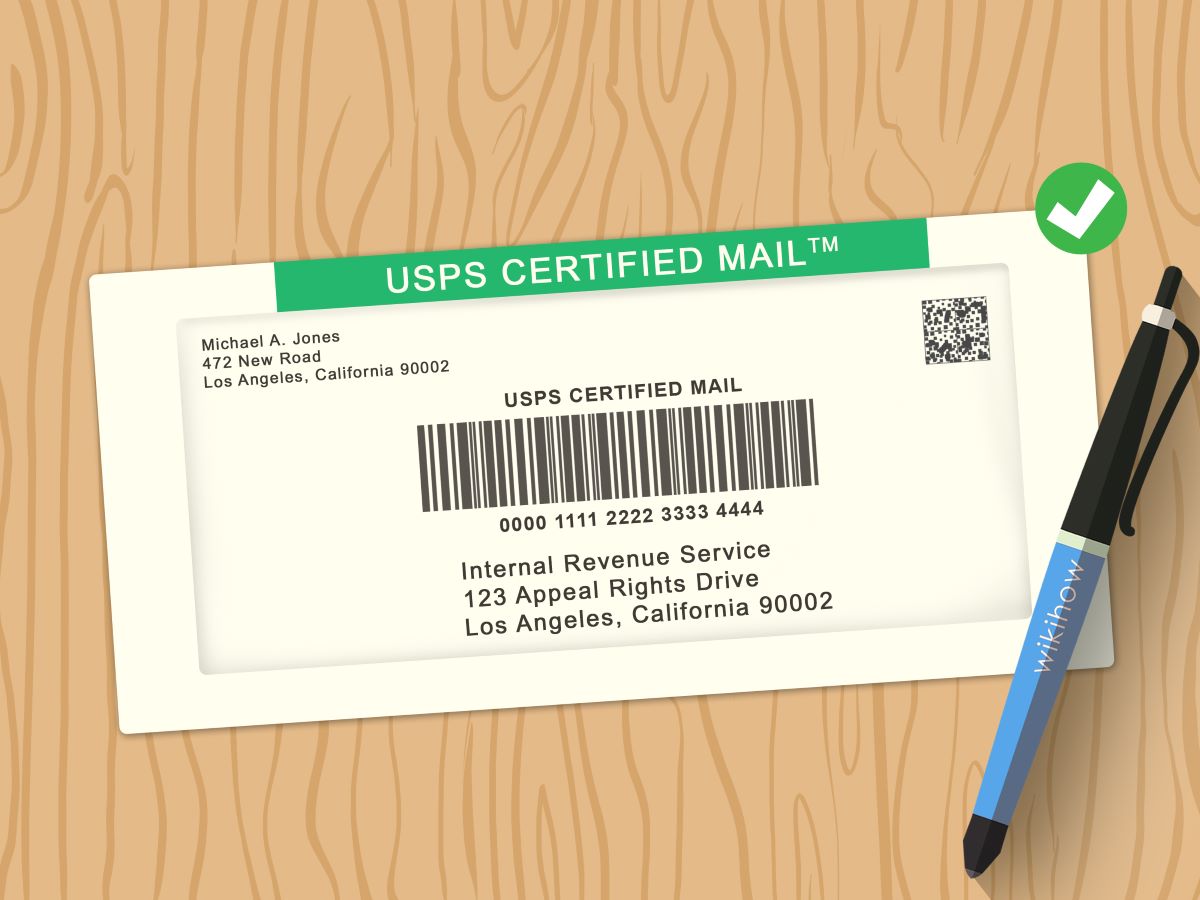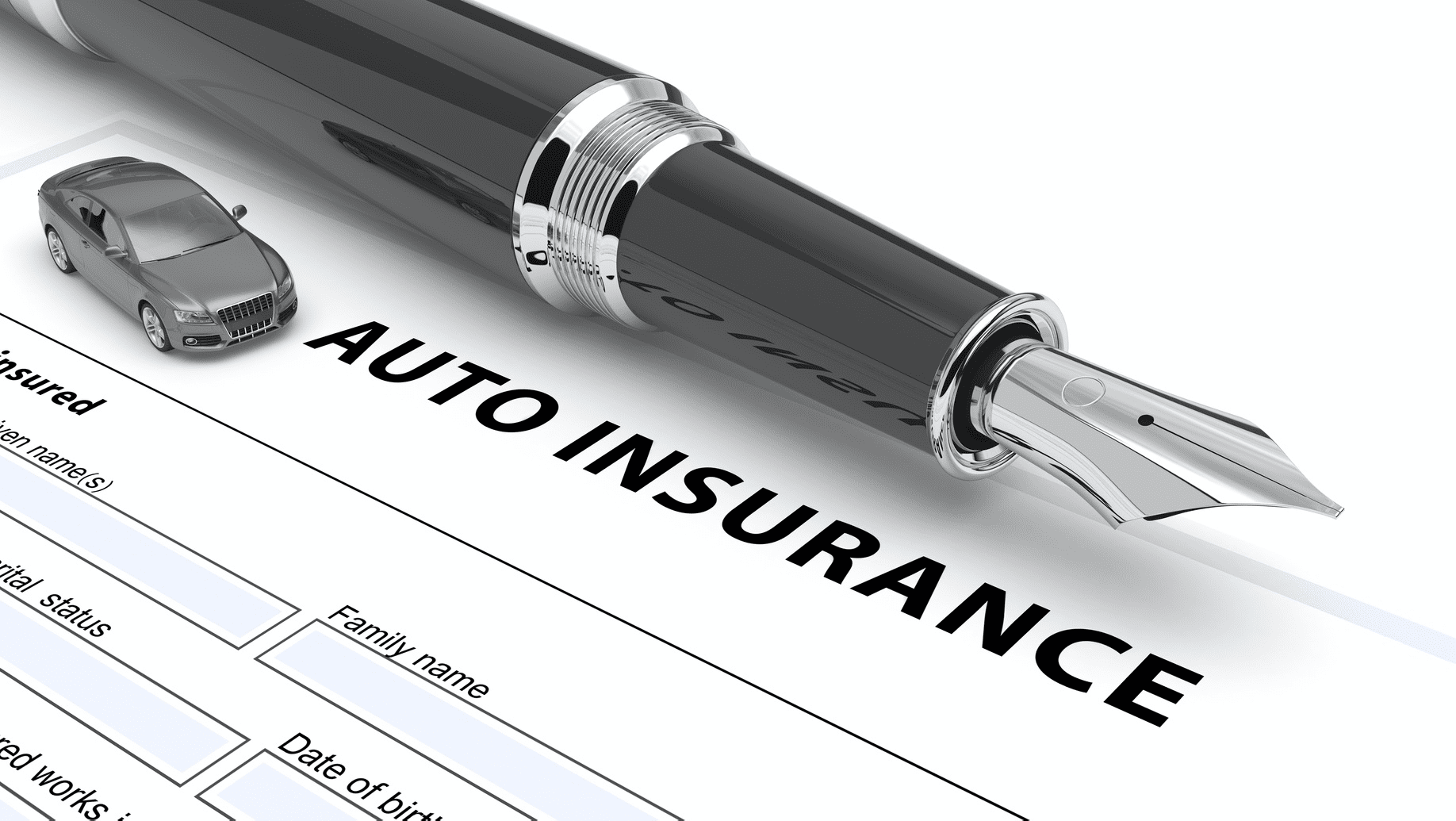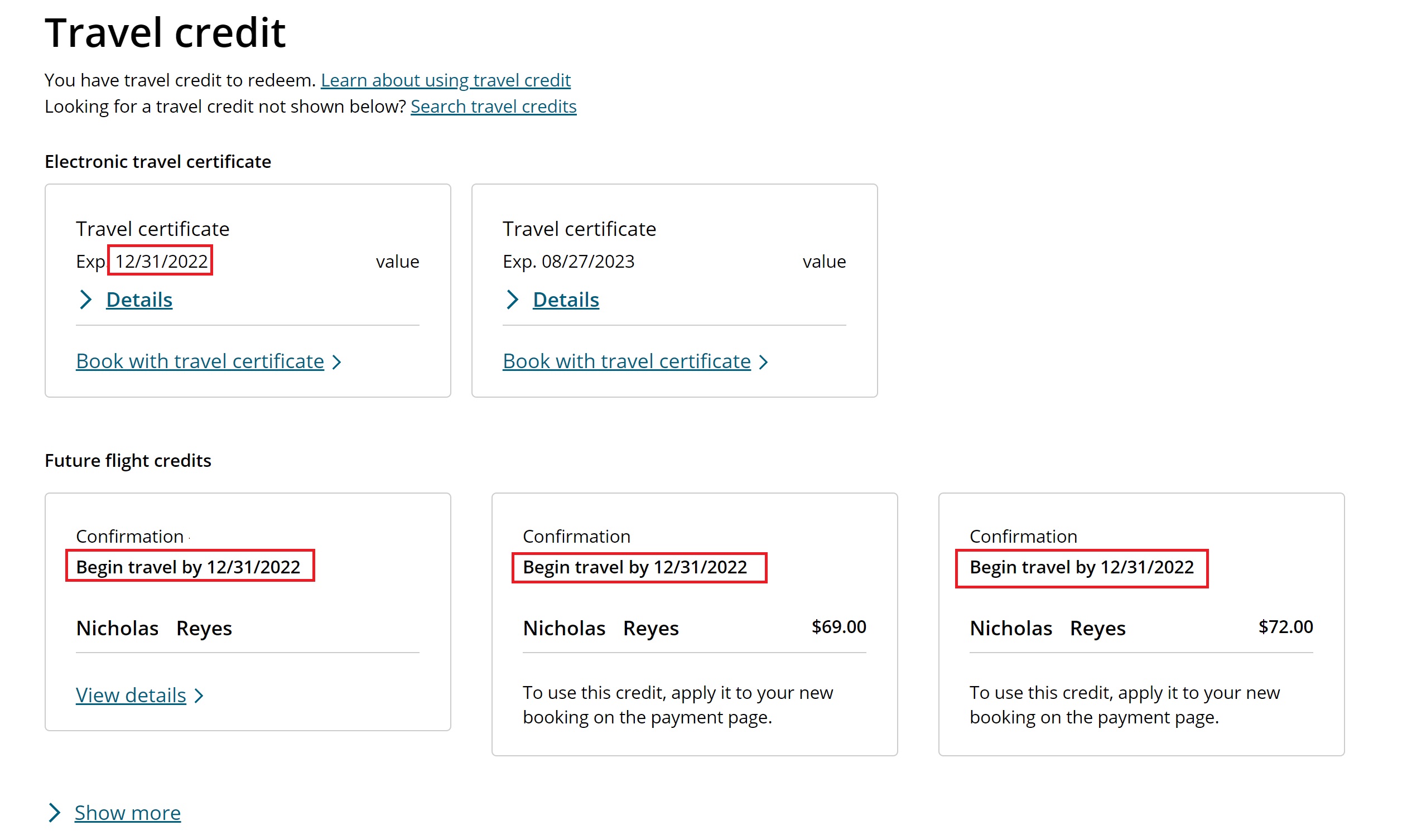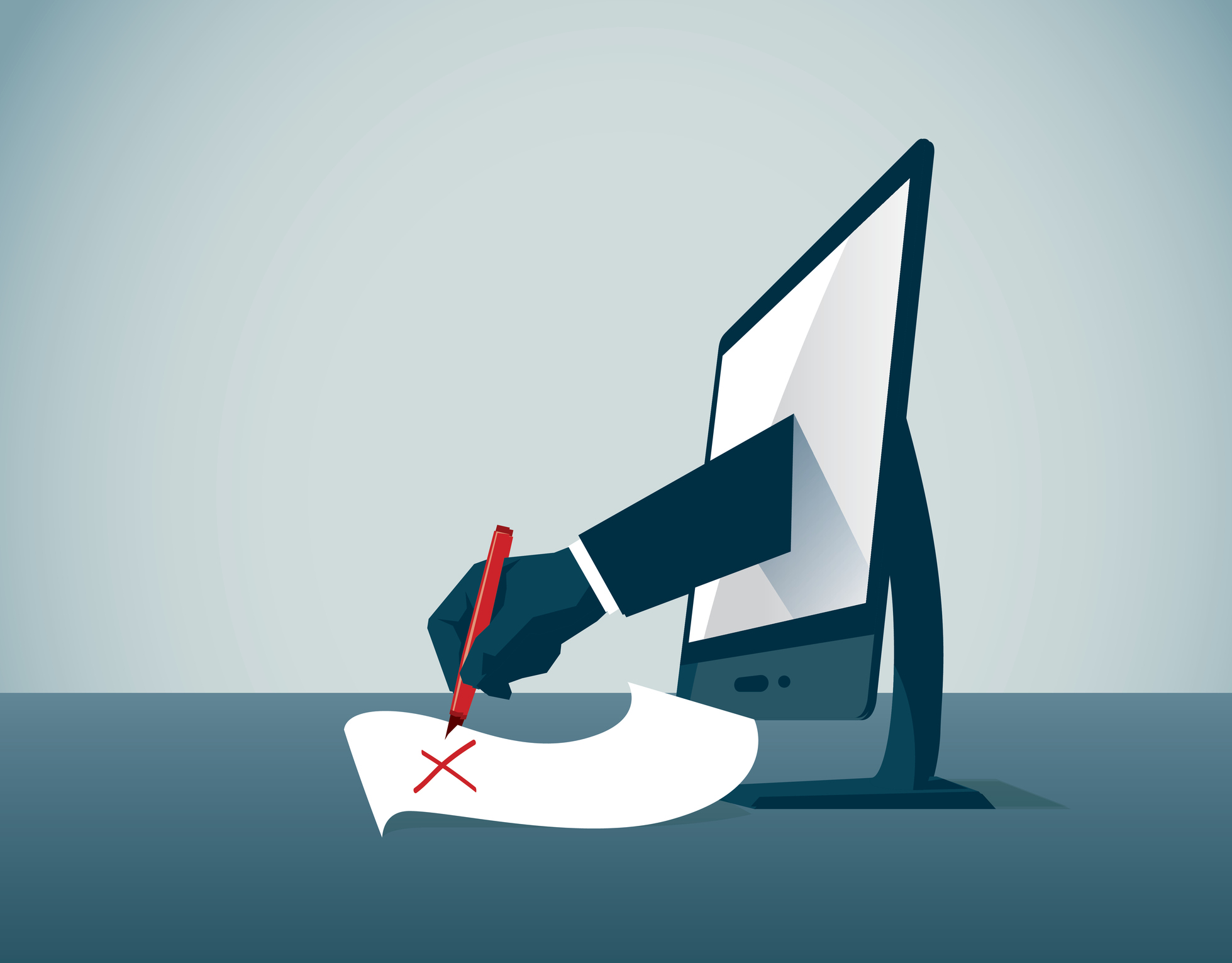

Finance
How To Write A Insurance Claim Letter
Published: November 22, 2023
Learn how to write an effective insurance claim letter for finance purposes. Helpful tips and guidelines to maximize your chances of a successful claim.
(Many of the links in this article redirect to a specific reviewed product. Your purchase of these products through affiliate links helps to generate commission for LiveWell, at no extra cost. Learn more)
Table of Contents
- Introduction
- Understanding the Insurance Claim Process
- Gathering Relevant Information
- Formatting and Structure of the Letter
- Writing the Opening Paragraph
- Providing a Detailed Account of the Incident
- Attaching Supporting Documents
- Clearly Specifying the Desired Outcome
- Requesting Assistance or Clarification
- Closing the Letter
- Finalizing and Sending the Claim Letter
- Conclusion
Introduction
When unfortunate events occur that result in damage to your property or personal belongings, filing an insurance claim can help alleviate the financial burden. However, it is crucial to approach this process with care and precision. Writing an effective insurance claim letter is essential to ensure that your claim is properly addressed and resolved.
The purpose of an insurance claim letter is to state your case clearly and provide all necessary information to support your claim. Whether it’s a car accident, a natural disaster, or a burglary, the letter serves as a formal request for compensation or reimbursement from your insurance provider. By presenting a well-structured and detailed letter, you increase the chances of a favorable outcome.
In this article, we will guide you through the process of writing an insurance claim letter that effectively conveys your loss and expectations. Understanding the insurance claim process, gathering relevant information, and knowing how to format and structure your letter are key elements to strengthen your case.
By following these guidelines, you will be equipped to address your concerns professionally and assertively, ultimately increasing the likelihood of a prompt and satisfactory resolution to your claim.
Understanding the Insurance Claim Process
Before diving into writing your insurance claim letter, it’s important to have a clear understanding of the insurance claim process. This knowledge will help you navigate the steps involved and ensure that you provide all the necessary information to support your claim.
The insurance claim process typically starts with reporting the incident to your insurance provider as soon as possible. This can usually be done through a phone call or online claim submission. It is crucial to report the incident promptly to avoid any potential delays or complications.
After reporting the incident, an insurance adjuster will be assigned to your case. The adjuster will review the details of the incident, assess the damages or losses, and determine the coverage and eligibility for compensation or reimbursement.
During the claim process, you may be required to provide supporting documentation such as police reports, photographs of the damages, medical records, or receipts for repairs. This documentation is crucial as it validates your claim and provides the necessary evidence for the insurance company to evaluate your case accurately.
Once all the necessary documentation is gathered, it is then time to submit your insurance claim letter. This letter will serve as a formal request for compensation or reimbursement for the damages or losses you have incurred.
By understanding the insurance claim process, you can effectively navigate each step and provide the required information, enhancing the chances of a successful claim. Now, let’s move on to the next section, which covers gathering relevant information for your claim letter.
Gathering Relevant Information
When preparing to write your insurance claim letter, it is crucial to gather all the relevant information related to the incident. This information will not only help you present a clear and detailed account of what happened but also provide the necessary evidence to support your claim.
Here are some key pieces of information to gather:
- Date and time: Record the exact date and time of the incident. This information is essential to establish the timeline of events.
- Description of the incident: Write a detailed description of what happened. Include relevant facts such as the location, circumstances, and any relevant details that help paint a clear picture of the incident.
- Witness statements: If there were any witnesses to the incident, try to obtain their contact information and statements. Witness testimonies can provide additional support for your claim.
- Police reports and case numbers: If the incident was reported to the police, make sure to obtain copies of the police reports and note down any case numbers or reference numbers related to the incident.
- Photographs or videos: Take pictures or videos of the damages or losses caused by the incident. Visual evidence can significantly strengthen your claim and provide a clear representation of the extent of the damage.
- Medical records: If the incident resulted in any injuries that required medical attention, gather relevant medical records, including diagnosis, treatment, and bills. These records will support any claims for medical expenses or personal injury.
- Receipts and invoices: If you incurred any expenses related to the incident, such as repairs or replacement of damaged items, gather all receipts and invoices as proof of the costs.
By gathering all the relevant information, you will be able to provide a comprehensive and well-supported claim in your insurance claim letter. These details not only ensure accuracy but also demonstrate to the insurance company that you have diligently documented the incident and its impact.
Now that you have gathered the necessary information, we can move on to the next section, where we discuss the formatting and structure of your insurance claim letter.
Formatting and Structure of the Letter
Formatting and structuring your insurance claim letter properly is essential to ensure clarity and professionalism. Here are some guidelines to follow:
- Use a professional tone: Your letter should be written in a formal and respectful tone. Avoid using overly emotional or confrontational language, as it may negatively impact the perception of your claim.
- Include a clear and concise subject line: Begin your letter with a subject line that summarizes the purpose of your letter. For example, “Claim for [incident/loss description].”
- Use a professional letter format: Start with your contact information, followed by the date and the recipient’s contact information. Use a clear and professional font, and maintain consistent spacing throughout the letter.
- Organize your letter into paragraphs: Divide your letter into paragraphs to improve readability. Each paragraph should address a specific aspect of your claim, such as the incident description, supporting evidence, and desired outcome.
- Use clear and concise language: Clearly state the details of the incident and provide specific information regarding the damages or losses. Be concise and avoid unnecessary embellishments or irrelevant information.
- Include bullet points or numbered lists: Use bullet points or numbered lists to present important information, such as a list of damaged items or a summary of expenses incurred. This helps organize the information and make it easier to read.
- Proofread and edit: Before finalizing your letter, thoroughly proofread it for any spelling or grammatical errors. Ensure that the letter flows smoothly, is easy to understand, and has a logical structure.
- Sign the letter: At the end of the letter, leave space for your signature. Sign the letter with your full name and include any additional information, such as a contact number or email address.
By formatting and structuring your insurance claim letter in a professional manner, you demonstrate attention to detail and enhance the overall presentation of your case. The next section will guide you through writing the opening paragraph of your claim letter.
Writing the Opening Paragraph
The opening paragraph of your insurance claim letter is crucial as it sets the tone for the rest of the letter and captures the attention of the reader. Here are some tips to help you craft an effective opening paragraph:
- Address the recipient: Begin your letter with a polite and professional salutation, addressing the insurance company or the specific individual responsible for handling insurance claims.
- State your purpose: Clearly and concisely state the purpose of your letter. For example, you can say, “I am writing to file an insurance claim for [incident/loss description].” This immediately informs the reader about the intention of your communication.
- Provide necessary details: In the opening paragraph, briefly mention key details of the incident, such as the date, location, and a succinct description of the event. This helps the reader quickly understand the context of your claim.
- Express the importance of the claim: Convey the significance of the claim by emphasizing the impact it has had on your life or business. Briefly explain the consequences of the incident and how it has affected you financially, emotionally, or otherwise.
- Express your expectations: Clearly state your expectations for the claim resolution, whether it’s compensation for damages or reimbursement for losses. Be assertive but polite in expressing your desired outcome.
Remember to keep the opening paragraph concise and to the point. Use clear and straightforward language to ensure that the reader understands the purpose of your letter from the very beginning. By doing so, you establish a confident and professional tone for the remainder of your insurance claim letter.
Now that you have crafted a compelling opening paragraph, let’s move on to the next section, which focuses on providing a detailed account of the incident.
Providing a Detailed Account of the Incident
After setting the tone with your opening paragraph, it is time to provide a comprehensive and detailed account of the incident in your insurance claim letter. This section plays a critical role in helping the insurance company understand the specifics of what happened. Here’s how to effectively provide a detailed account:
- Start with a chronological order: Begin by outlining the events in proper chronological order. Provide a factual and unbiased description of what occurred, including any relevant dates, times, and locations.
- Include specific details: Be sure to include specific details such as the cause of the incident, any contributing factors, and any parties involved. The more specific and accurate your account, the more likely the insurance company is to understand and evaluate your claim properly.
- Describe the extent of the damages or losses: Clearly explain the damages or losses that you have incurred as a result of the incident. Provide a detailed inventory of any damaged items, property damage, or financial losses, supported by photographs, receipts, or other relevant documentation.
- Explain any relevant circumstances or factors: If there were any unique circumstances or factors surrounding the incident that may impact your claim, it is important to explain them clearly. This could include weather conditions, third-party involvement, or any other relevant details that add context to your case.
- Be objective and avoid exaggeration: It is crucial to present your account of the incident objectively and avoid any exaggeration or embellishment. Stick to the facts and provide accurate information to maintain credibility.
- Use clear and concise language: Ensure that your account is written in clear and concise language. Use short sentences and paragraphs to improve readability and make it easier for the reader to understand your narrative.
By providing a detailed and accurate account of the incident in your insurance claim letter, you give the insurance company a clear understanding of what occurred and the impact it has had on you. Now, let’s move on to the next section, which covers attaching supporting documents to strengthen your claim.
Attaching Supporting Documents
Supporting documents play a crucial role in strengthening your insurance claim by providing tangible evidence to substantiate your case. When writing your claim letter, it’s important to mention and attach relevant supporting documents. Here’s how to effectively handle supporting documentation:
- Create a checklist: Before submitting your claim letter, create a checklist of the required supporting documents. This will help you ensure that you have all the necessary paperwork to support your claim.
- Gather relevant documents: Collect all relevant supporting documents such as police reports, photographs, receipts, invoices, medical records, and any other evidence that bolsters your claim. These documents should directly relate to the incident and the damages or losses you have suffered.
- Organize and label the documents: Arrange the supporting documents in a logical order and label them accordingly. Use clear and descriptive labels, which will make it easier for the insurance company to review and process your claim.
- Make copies: Ensure that you have copies of all the supporting documents to retain for your records. It’s also a good idea to keep the originals in a secure place for future reference.
- Refer to the documents in your letter: In your claim letter, specifically mention the supporting documents you have included. For example, you can say, “Please find attached the following supporting documents: [list the documents].” This ensures that the insurance company is aware of the evidence you have provided.
- Keep a record: Keep a record of the date and method of submission for the supporting documents. This will help you track the progress of your claim and serve as proof of your compliance with the claim process.
Attaching the necessary supporting documents adds credibility and validity to your insurance claim. It provides a factual basis for the losses or damages you have experienced, increasing the likelihood of a favorable resolution. Now, let’s move on to the next section, which focuses on clearly specifying the desired outcome in your claim letter.
Clearly Specifying the Desired Outcome
In your insurance claim letter, it is essential to clearly outline your desired outcome. Clearly specifying what you expect from the insurance company can help streamline the claims process and ensure that your expectations are properly addressed. Here’s how to effectively communicate your desired outcome:
- Be specific: Clearly state what you expect as the resolution of your claim. This could include reimbursement for specific expenses, compensation for damages, or a specific action you want the insurance company to take.
- Provide supporting documentation: Refer back to the supporting documents you attached and highlight how they support your desired outcome. For example, if you are requesting compensation for medical expenses, provide the relevant medical records and bills as evidence.
- Quantify your claim: If applicable, quantify the financial losses or damages you are claiming. Provide detailed estimates, invoices, or receipts to support your calculations. This helps the insurance company better understand the value of your claim.
- Reference policy terms and coverage: If your desired outcome aligns with the terms and coverage specified in your insurance policy, reference those sections to reinforce your claim. This shows that you have a clear understanding of your policy and are seeking a resolution within its provisions.
- Express the impact: Explain the impact that the incident and subsequent damages or losses have had on your life, business, or wellbeing. This can include financial strain, emotional distress, or disruption to your daily activities. Helping the insurance company understand the personal impact can strengthen your case.
- Remain assertive but polite: Keep your tone assertive throughout the letter, but maintain a professional and polite approach. Firmly state your expectations while remaining respectful of the claims process and the insurance company.
By clearly specifying your desired outcome, you provide the insurance company with a clear understanding of what you are seeking from the claims process. This increases the likelihood of a fair and satisfactory resolution. Now, let’s move on to the next section, which covers requesting assistance or clarification in your claim letter.
Requesting Assistance or Clarification
In your insurance claim letter, it is essential to request any necessary assistance or clarification from the insurance company. This ensures that you have a clear understanding of the claims process and can address any potential concerns. Here’s how to effectively request assistance or clarification:
- Identify any areas of confusion: If there are any aspects of the claims process or the insurance policy that you find unclear, highlight them in your letter. This could include coverage limitations, claim procedures, or any specific terms or conditions that require clarification.
- Be specific in your requests: Clearly state what you need assistance with or what aspects you would like further clarification on. This could include understanding specific policy provisions, navigating the claims process, or any documentation requirements.
- Ask for guidance: If you are unsure about the next steps in the claims process or what is required from you, ask for guidance. Request clear instructions or a point of contact who can provide assistance and answer any questions you may have.
- Request timely updates: If there are delays in the claims process or if you are waiting for a response from the insurance company, politely request timely updates. Setting expectations for regular communication shows your engagement and ensures that you are informed about the progress of your claim.
- Express willingness to provide additional information: Let the insurance company know that you are prepared to provide any additional information or documentation that may be required to process your claim. This shows your cooperation and willingness to collaborate in resolving the claim.
- Thank the insurance company in advance for their assistance: Express gratitude for the insurance company’s attention to your claim and their willingness to provide assistance or clarification. A polite and appreciative tone can enhance the relationship and cooperation during the claims process.
By requesting assistance or clarification in your insurance claim letter, you ensure that you have a clear understanding of the process and requirements. This facilitates a smoother claims process and reduces any potential misunderstandings. Now, let’s move on to the next section, which covers closing the letter effectively.
Closing the Letter
Closing your insurance claim letter effectively is crucial to leave a lasting impression and encourage a timely response from the insurance company. Here are some key points to consider when closing your letter:
- Summarize your expectations: In the closing paragraph, summarize your desired outcome and reiterate the main points of your claim. This reinforces the purpose of your letter and reminds the insurance company of the resolution you are seeking.
- Express your confidence in a fair assessment: Convey your confidence in the insurance company’s commitment to a fair assessment of your claim. This demonstrates your trust in their professionalism and encourages a prompt and accurate evaluation of your case.
- Thank the insurance company: Express appreciation for the insurance company’s time and attention to your claim. A polite and gracious tone can foster positive communication and cooperation throughout the claims process.
- Include your contact information: Provide your full name, contact number, email address, and any other relevant contact information. This allows the insurance company to easily reach you for any further communication or clarification.
- Request confirmation of receipt: Politely request that the insurance company acknowledges receipt of your claim letter. This ensures that your letter has been properly received and adds a level of accountability to the claims process.
- Sign off with a professional closing: End your letter with a professional closing, such as “Sincerely” or “Yours faithfully.” Sign your name underneath the closing to formalize your letter.
Closing your insurance claim letter in a professional and concise manner ensures that your expectations are clearly communicated and provides the insurance company with the necessary information to process your claim. Now, let’s move on to the final section, where we discuss finalizing and sending the claim letter.
Finalizing and Sending the Claim Letter
Before sending your insurance claim letter, it is crucial to take the time to finalize and review the document. Here are some important steps to follow when finalizing and sending your claim letter:
- Proofread for errors: Carefully review your letter for any spelling, grammar, or typographical errors. A well-polished document enhances your professionalism and credibility.
- Ensure clarity and coherence: Check that your letter flows smoothly and follows a logical structure. Ensure that the information is presented in a clear and coherent manner, making it easy for the reader to understand your claim.
- Double-check supporting documents: Verify that all the necessary supporting documents are properly attached and referenced in your letter. Confirm that they are labeled correctly and organized in a way that makes it easy for the insurance company to review.
- Make copies of the letter and documents: Create copies of the entire claim letter and all supporting documents for your records. This will serve as a reference in case of any future inquiries or follow-ups.
- Choose a secure and traceable method of delivery: When sending your claim letter, opt for a secure and traceable method such as certified mail or email. This ensures that your documentation is received and enables you to track its delivery.
- Keep records of communication: Maintain a record of all communication related to your claim, including the date and time of submission, any received acknowledgments, and any follow-up correspondence.
By finalizing and sending your claim letter with careful attention to detail, you increase the chances of a prompt and thorough evaluation of your claim. Remember, timely and accurate communication is key to a successful resolution.
Now that you have completed your insurance claim letter, it’s time to send it off to the insurance company. Be sure to keep a copy of the letter and supporting documents for your records. With proper preparation and a well-crafted letter, you are on your way to effectively resolving your claim.
Conclusion
Writing an insurance claim letter may seem daunting, but with the right approach and attention to detail, you can effectively communicate your case to the insurance company. By understanding the insurance claim process, gathering relevant information, and structuring your letter appropriately, you significantly increase the chances of a favorable outcome.
Remember to provide a detailed account of the incident, attaching supporting documents to strengthen your claim. Clearly specify your desired outcome and request any necessary assistance or clarification from the insurance company. Close your letter on a professional note, expressing gratitude and providing your contact information.
Throughout the process, maintain a polite and assertive tone, ensuring that all details are presented accurately and concisely. Always proofread your letter and verify the accuracy of supporting documents before finalizing and sending them.
By following these guidelines, you will demonstrate professionalism and thoroughness in your insurance claim letter, increasing the likelihood of a prompt and fair evaluation. Remember to keep a record of all communication and follow up if necessary.
Writing an effective insurance claim letter is a crucial step in obtaining the compensation or reimbursement you deserve. With careful preparation and attention to detail, your claim stands a better chance of being resolved in a satisfactory manner. Good luck with your claim!

